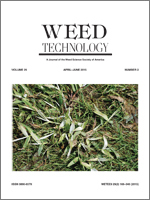Crop producers might be able to better manage field bindweed, an aggressive perennial weed, by utilizing tillage to bring roots to the surface where they can be consumed by ruminant livestock. The objectives of this study were to provide first perspectives on forage nutritive value of field bindweed roots and to determine root chemistry responses to Aceria malherbae, an eriophyid mite that has been released for field bindweed biocontrol in the western United States and Canada. To accomplish these objectives, root systems were sampled from A. malherbae-infested and noninfested plants occurring in an agricultural field in eastern New Mexico. Sampling took place during autumn and spring of each year for 3 consecutive yr. Results indicated that A. malherbae reduced taproot diameter and increased root concentrations of Ca, P, and Mg. However, A. malherbae did not affect root concentrations of acid detergent fiber, nonfiber carbohydrates, neutral detergent fiber (NDF), crude protein (CP), and total digestible nutrients (TDN). Overall means for NDF (33.8%), CP (11.6%), and TDN (72.1%) were similar to those reported for forages commonly grown in the region, suggesting that field bindweed roots might positively contribute to nutritional programs of ruminant livestock. These results justify subsequent studies on livestock responses to field bindweed roots and field bindweed responses to targeted root grazing.
Nomenclature: Field bindweed, Convolvulus arvensis L. COAR4.
Productores de cultivos en regiones templadas podrían ser capaces de controlar Convolvulus arvensis, una maleza perenne agresiva, utilizando labranza para traer las raíces a la superficie donde estas pueden ser consumidas por ganado rumiante. Los objetivos de este estudio fueron brindar las primeras perspectivas del valor nutritivo como forraje de las raíces de C. arvensis y determinar las respuestas químicas de la raíz a Aceria malherbae, un ácaro eriófido que ha sido liberado para el control biológico de C. arvensis en el oeste de los Estados Unidos y Canadá. Para alcanzar estos objetivos, se muestrearon sistemas de raíces en plantas infestadas y sin infestar con A. malherbae que estaban presentes en campos agrícolas en el este de New Mexico. El muestreo se dio en el otoño y la primavera de cada año, por 3 años consecutivos. Los resultados indicaron que A. malherbae redujo el diámetro de la raíz pivotante e incrementó la concentración de Ca, P, y Mg en las raíces. Sin embargo, A. malherbae no afectó las concentraciones de fibra detergente ácida, carbohidratos no-fibrosos, fibra detergente neutral (NDF), proteína cruda (CP), y los nutrientes digeribles totales (TDN). Promedios generales de NDF (33.8%), CP (11.6%), y TDN (72.1%) fueron similares a los reportados para forrajes comúnmente producidos en la región, lo que sugiere que las raíces de C. arvensis podrían contribuir en forma positiva a los programas nutricionales para ganado rumiante. Estos resultados justifican la realización de más estudios sobre la respuesta del ganado a las raíces de C. arvensis y las respuestas de esta maleza al pastoreo enfocado en sus raíces bajo condiciones de campo.





